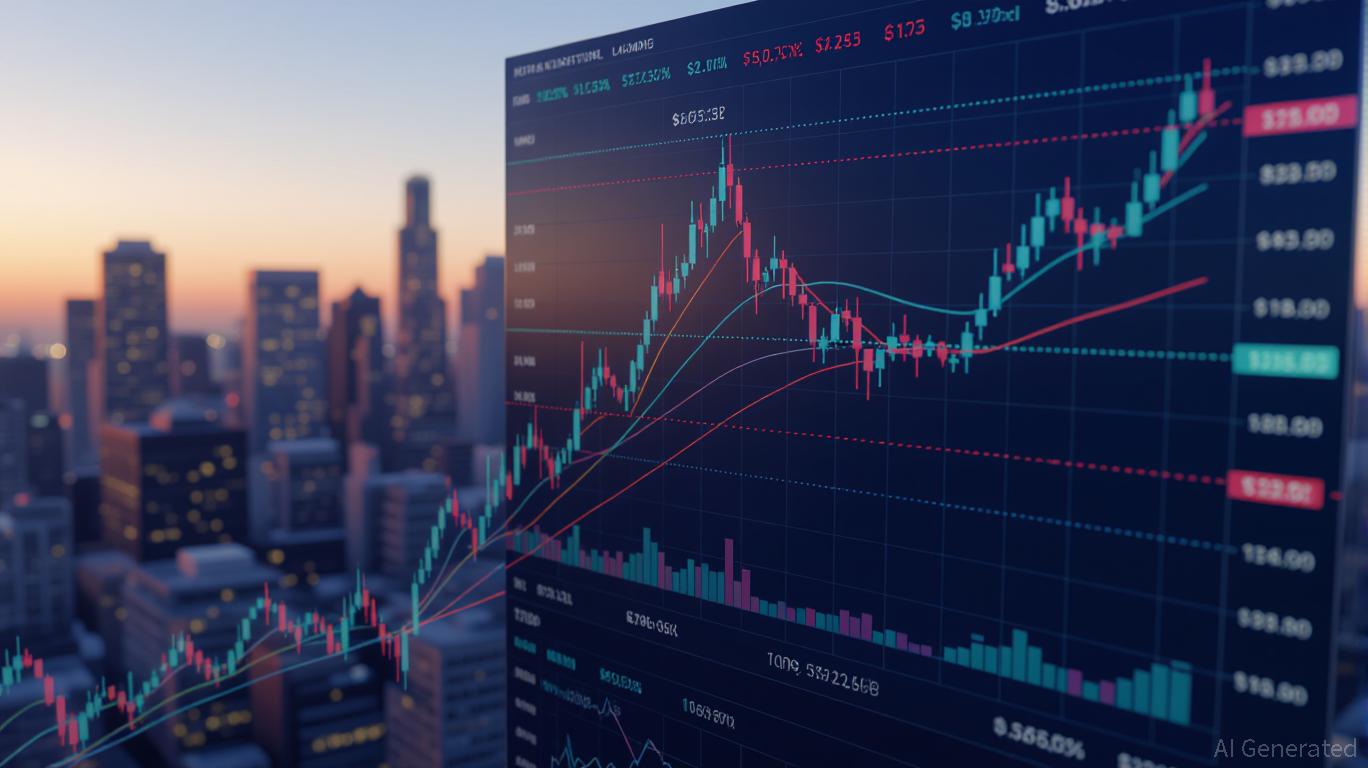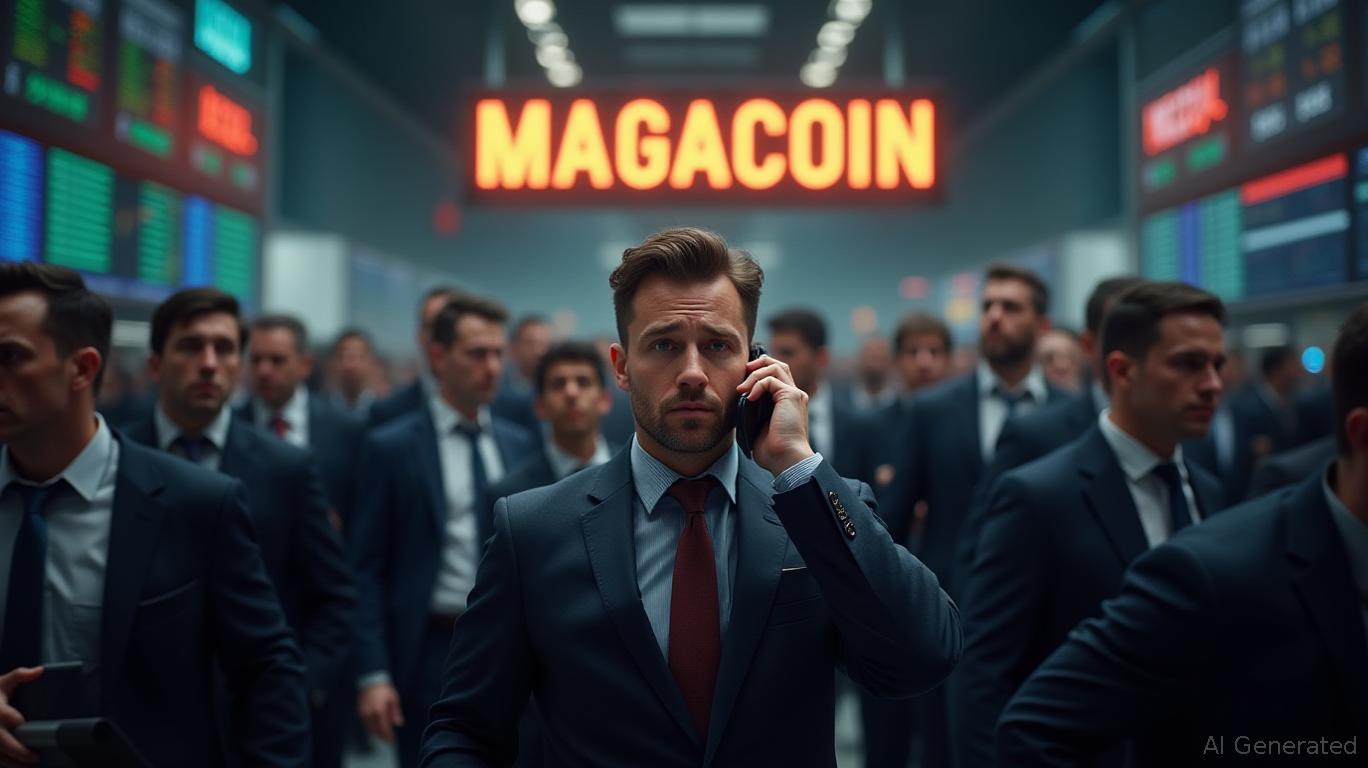News
Stay up to date on the latest crypto trends with our expert, in-depth coverage.

- Solana's $206 breakout forms a bullish ascending triangle pattern, with technical indicators like SMA/EMA and MACD suggesting potential for a $215–$300 rally. - On-chain data shows $505M whale staking and $164M ETF inflows, signaling institutional confidence in Solana's high-speed blockchain and DeFi ecosystem growth. - Risks include $57M liquidations and Bitcoin's 60.66% dominance, though robust TVL ($17.4B) and restaking protocols reinforce Solana's macro-capacity positioning. - A clean $215 breakout w

- Strategy Inc. (formerly MicroStrategy) has spent $25B+ buying 632,457 BTC (3% of supply) via equity issuance, eroding Bitcoin per Share and NAV by 40% since 2023. - The strategy relies on perpetual stock issuance below intrinsic value, risking forced BTC sales if prices drop 40% to $70,000 by 2026. - Bitcoin ETFs like IBIT/GBTC ($21.2B in assets) now offer regulated alternatives, reducing demand for Strategy's dilutive model. - Investors face a binary choice: tolerate dilution for potential BTC growth or

- Tron (TRX) slashed network fees by 60% on August 29, 2025, reducing energy unit prices from 210 to 100 sun to prioritize user adoption over short-term profits. - The move, endorsed by founder Justin Sun, targets stablecoin dominance and emerging markets, despite immediate TRX price drops and inflation risks from reduced token burns. - Analysts highlight potential long-term gains through increased USDT transaction volumes ($82B annually) and ecosystem growth, though critics warn of revenue erosion and val

- Digital Shovel partners with IREN to deliver 493 MW of infrastructure, powering 26 renewable-energy data centers for AI and Bitcoin mining. - The company's vertical integration, modular designs, and Smart PDU technology address rising demand for sustainable, high-performance data center solutions. - With the global data center market projected to reach $527.46B by 2025, Digital Shovel's energy-efficient infrastructure positions it as a key player in the AI and crypto mining boom. - Risks include reliance


- Toncoin (TON) accelerates institutional adoption via TSC's $558M PIPE, staking 4.86% yields and leveraging Telegram's 1.8B-user ecosystem for tokenized revenue streams. - Robinhood listing boosts TON liquidity by 60% while U.S./EU regulatory shifts (SEC ETF approval, MiCA) lower barriers for institutional crypto participation. - Staking partnerships with Copper/Kiln expand TON's utility but face risks from 68% whale-controlled supply, contrasting with Ethereum/Solana's institutional inflows in Q3 2025. -

- DMD Diamond Blockchain, a Layer 1 infrastructure, leverages blockchain to address systemic inefficiencies in scientific research via decentralized funding and open-access NFT-based publishing. - Its 20x higher throughput than Ethereum, instant finality, and low fees enable scalable scientific workflows, disrupting the $100B academic publishing industry. - With a $800M+ DeSci market target and FDV of BTC79.5309, DMD’s hybrid HBBFT consensus and 12-year blockchain history position it as a sustainable infra

- SWIFT tests Ripple's XRP Ledger for cross-border payments, aiming to integrate blockchain with ISO 20022 standards by 2025. - XRP offers near-instant settlements (<4s), $0.0002 fees, and 1,500 TPS—far outpacing SWIFT's $26–$50 fees and 3–5 day delays. - Institutional adoption grows as XRP bridges forex liquidity gaps, with Ripple's RLUSD stablecoin enabling real-time fiat-crypto conversions. - Analysts estimate a 1% shift in SWIFT's $150T annual volume to XRP could generate $1.5B in transactional demand
- 15:33Data: The share of total ETH supply currently held by digital asset treasuries has surpassed that of Bitcoin.According to a report by Jinse Finance, as disclosed by Bitcoin.com News, the share of ETH in the total supply held by digital asset treasuries has now surpassed that of Bitcoin. This is bad news for ETH: under the Proof-of-Stake mechanism, large holders can gain disproportionate control over the network. In contrast, Bitcoin's Proof-of-Work does not have such centralization risks.
- 15:31After selling 500 billion PEPE, a PEPE whale deposited 5.53 million USDC into HyperLiquid and opened a long position.Foresight News reported, according to Onchain Lens monitoring, a PEPE whale sold 500 billion PEPE for 1,112.37 ETH (approximately $4.6 million) and 561,923 EIGEN for 188.62 ETH (approximately $819,000). Subsequently, the address swapped ETH for USDC, and after being dormant for 7 months, deposited 5.53 million USDC into HyperLiquid, opening long positions on ASTER (2x leverage) and XPL (3x leverage).
- 15:17New York Tightens Crypto Custody Rules: Actual Ownership of Digital Assets Remains with Customers Even in BankruptcyJinse Finance reported that the New York State Department of Financial Services (NYDFS) has issued updated guidelines clarifying how licensed cryptocurrency custodians (VCEs) should structure custody arrangements to ensure that the actual ownership of digital assets remains with the clients, even in the event of bankruptcy. This update reflects the surge in demand for virtual asset custody from both retail and institutional clients and reiterates the department's expectations for sound custody and disclosure practices across the industry. The new regulations also set up guardrails for the operational framework of sub-custodians to ensure that client interests are protected throughout the entire asset lifecycle (from deposit and safekeeping to withdrawal and transfer), while minimizing the risk of asset shortfalls in the event of bankruptcy of a custodian or sub-custodian. Equally important, the guidelines reaffirm the department's stance on the permitted uses of custodial client assets. Companies are prohibited from arranging client assets in ways that could compromise clients' ownership or priority in the event of bankruptcy. The US SEC emphasized that the structure of custody arrangements should ensure that clients' beneficial rights remain clear, explicit, and enforceable in the event of bankruptcy. This includes clear and prominent disclosures explaining how assets are held, any third parties involved, and the actual impact on clients in stress events.